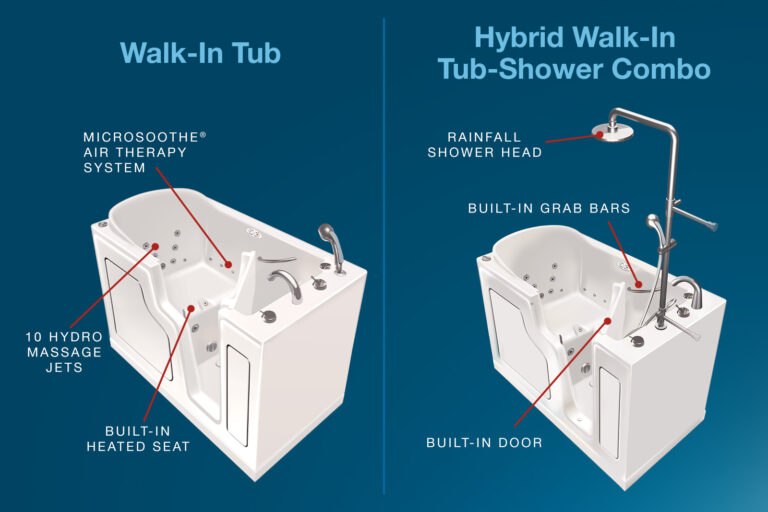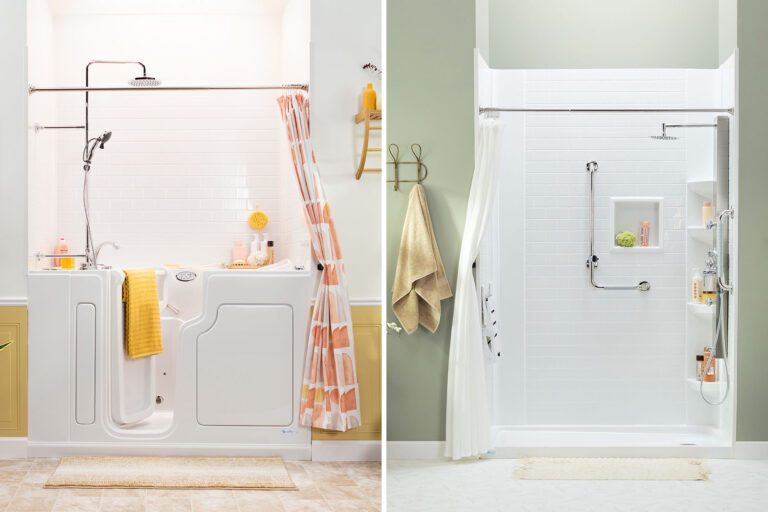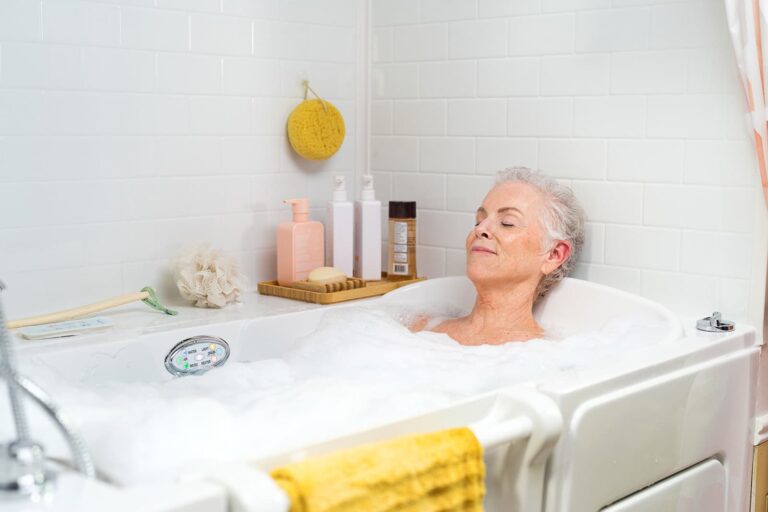5 Myths About Walk-In Tubs, Debunked
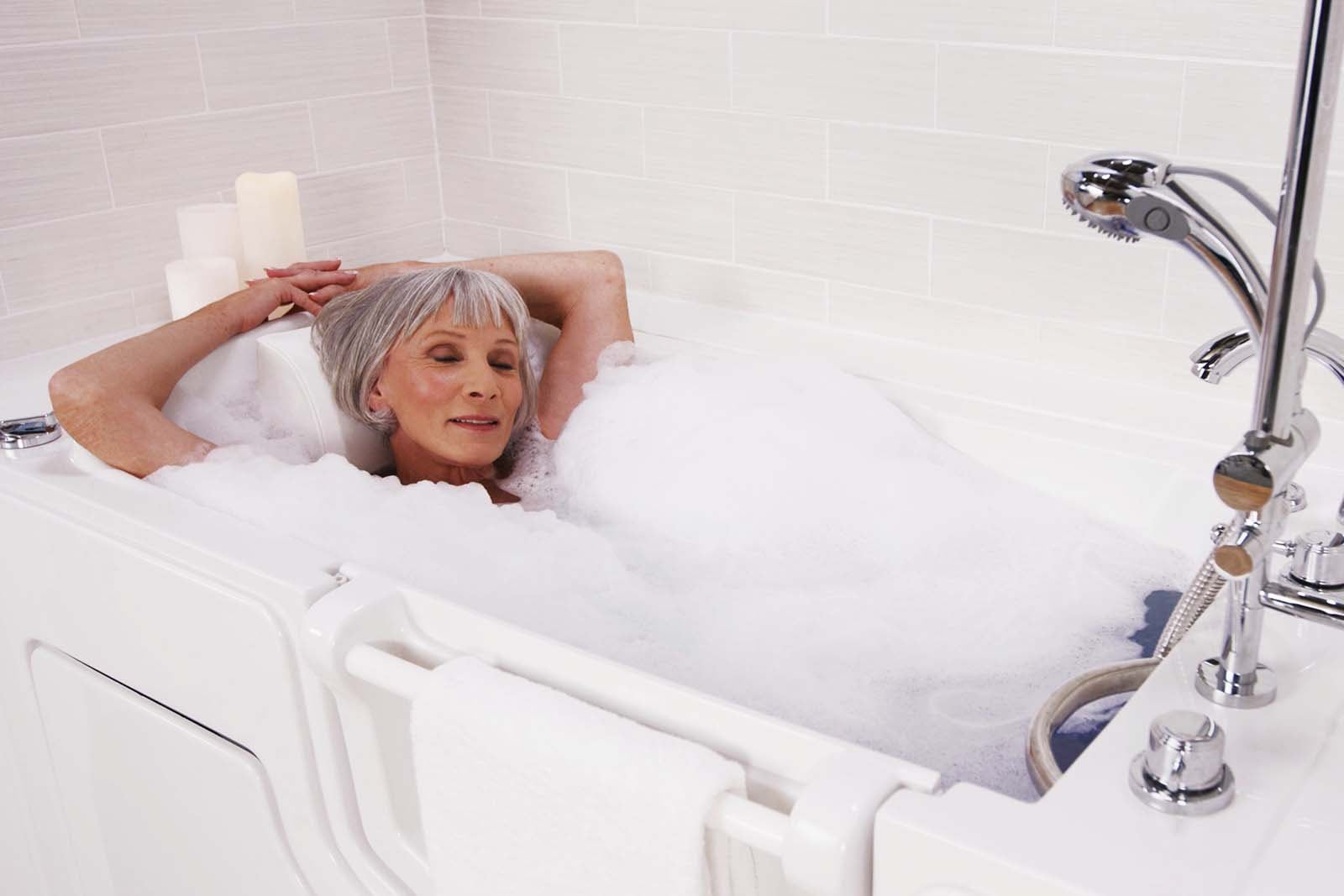
For seniors with limited mobility, bathing can often transform from a relaxing part of daily life into a risky, stressful experience. The bathroom, especially the tub, is one of the most common places for falls among older adults. With a walk-in tub, it’s possible to make bathing accessible and safe once again.
Despite this usefulness, there are certain misconceptions people have about walk-in tubs and how they work. Don’t let these myths keep you from discovering the many benefits of installing a walk-in tub!
Myth #1: Water Leaks Out of the Door
Perhaps the most prevalent myth about the walk-in bath is that water leaks out of the door and onto the floor of the bathroom.
The door of every Safe Step walk-in tub is airtight and features a no-strength locking handle, so water is unable to escape the bathtub and pool on the floor. Plus, the walk-in tub door opens inward, further decreasing any risk of water leaking out.
Myth #2: They’re Difficult to Clean
A walk-in bathtub is no more challenging to clean than a traditional tub. Though they often come with extra features, the maintenance is very similar to that of a standard bath.
After each use, you can use your tub’s handheld shower wand to rinse away any dirt and soap residue easily. Safe Step walk-in tubs also have a composite surface that is easy to clean without strenuous scrubbing. The antimicrobial gel coat makes cleaning even easier, providing long-lasting protection against mold and bacteria. Simply rinse with warm water after your bath, and you’re set.
Myth #3: Filling and Draining Are Time-Consuming
Much like the maintenance, there is little difference in filling time between a walk-in tub and a traditional one. The time it takes to fill and drain the tub depends entirely on the size of the bath and the strength of the water pressure. Plus, you never have to worry about the tub overfilling—our overfill drain prevents the water level in the bathtub from getting too high.
When you purchase a Safe Step walk-in tub, the rapid-fill faucet works swiftly, dispensing 20 gallons of water per minute with the average household’s ½” plumbing line. When you’re through, the Quantum® quick drain minimizes wait times so you can keep cozy and avoid chills.
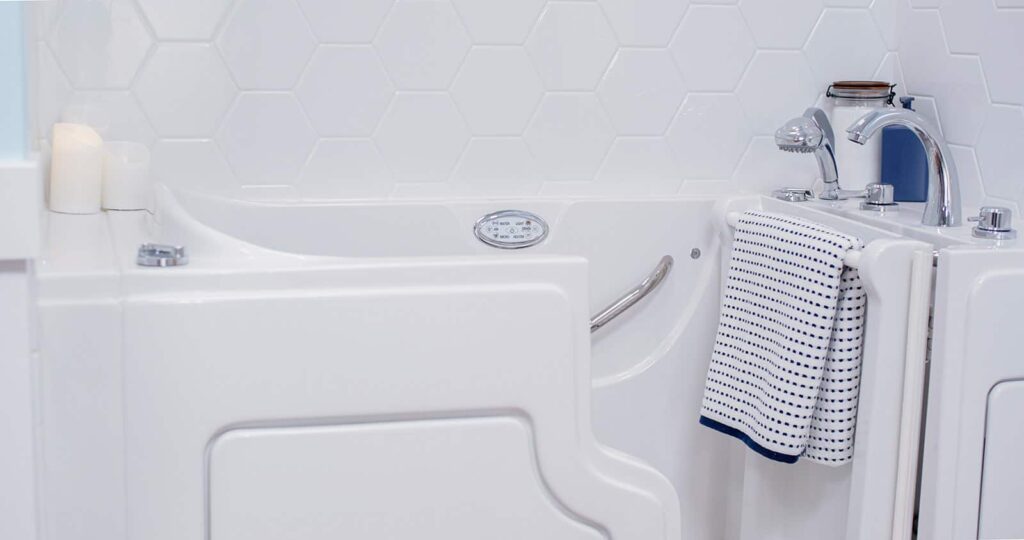
Myth #4: You Get Cold Waiting for the Tub to Fill
Stay warm as you wait for your walk-in tub to fill with our heated seat and backrest. It features an automatic thermal cut-off, so you can enjoy worry-free comfort for a spa-like experience. Adjust the temperature to match your mood from the moment you step in until you’re done bathing. Be sure to turn on your heated seat 5 minutes before you enter the tub so it has time to warm up.
You can also keep warm using your tub’s handheld shower wand as the tub fills. The wand’s wide range of motion and soothing rainfall give you complete control over how you bathe.
Myth #5: They’re Too Expensive
While a walk-in tub may have a higher up-front cost, you should consider it a worthwhile investment into comfortably aging at home. With the special safety, convenience and therapeutic features, your walk-in bathtub will remain useful for many years to come. We work within your budget by offering custom pricing, a lifetime warranty and a lowest price guarantee.
Stay independent while living in the home you love long-term with a walk-in tub. Not only will this make your life happier and healthier, but it also can help you avoid the exorbitant costs of assisted living services that may otherwise be necessary.
To learn more about walk-in bathtubs, request your free quote today to chat with a Safe Step expert.
